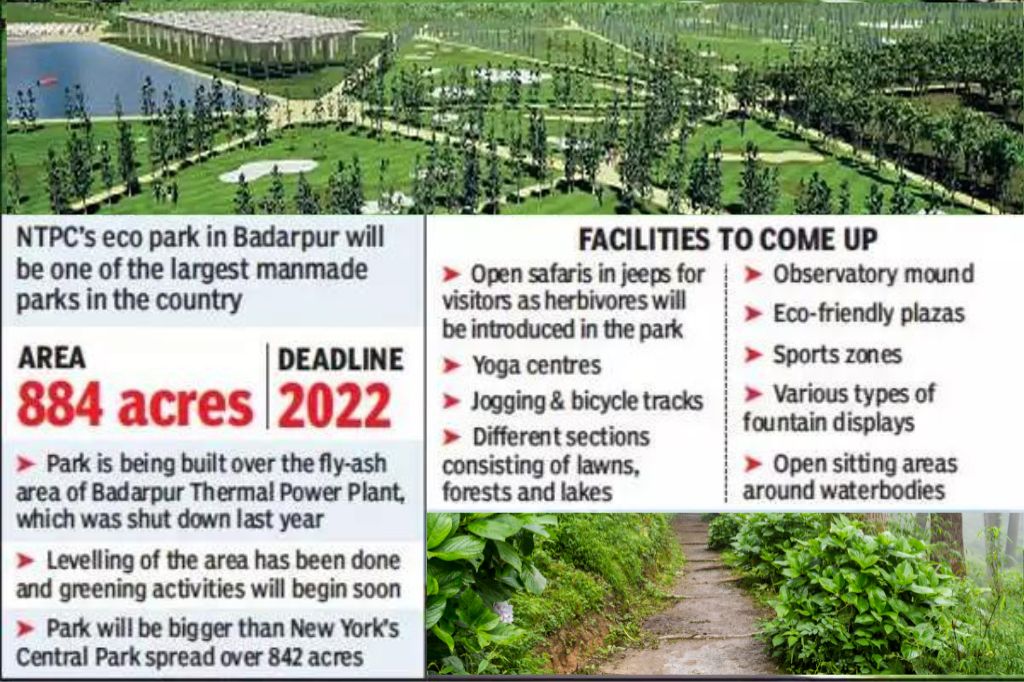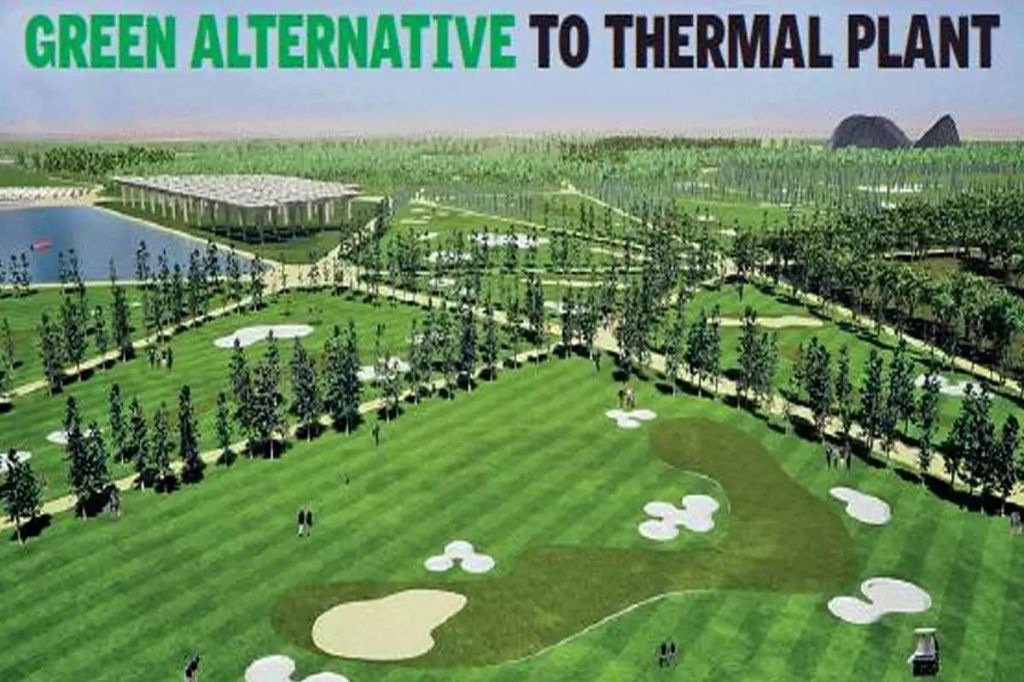Amidst the urban sprawl and the bustle of India’s capital city, Delhi, emerges a symbol of the green revolution – the Eco Park. Rising from the ashes of the decommissioned Badarpur Thermal Power Plant, the Eco Park is not just a rejuvenation of space, but a reincarnation of ideals. It heralds a paradigm shift in the way we perceive urban regeneration, fostering the intertwining of city life with nature’s tranquility.
Encompassing 885 acres, the park stands as the second-largest in Asia, rivaling New York’s Central Park in size and grandeur as reported by TOI. It weaves a seamless tapestry of recreational facilities, green spaces, water bodies, and innovative attractions. Yet, at its core, it remains deeply rooted in the ethos of eco-friendliness and sustainability. From harnessing solar energy to employing recycled water, the park fosters a symbiotic relationship between human progress and environmental preservation.

The unique aspect of Eco Park lies in its transformative journey from a power plant wasteland to an urban oasis. This metamorphosis was sparked by the combined visions of the NTPC and the Central Government, underscoring the potential for adaptive reuse of industrial sites. Harnessing the power of phyto-remediation, composting, and smart energy systems, the park symbolizes a fusion of nature and technology, all with the purpose of reviving the environment.
With its vastness, the park offers an array of experiences. From jogging tracks and bicycle paths for fitness enthusiasts to yoga centers for those seeking spiritual tranquility, Eco Park serves as a holistic retreat in the heart of the metropolis. It is a testament to Delhi’s burgeoning reputation as ‘mini India,’ boasting a diversity of experiences that mirror the multicultural fabric of the nation
Also read: Boomerang Evolves into Cartoonito: A Revolutionary Leap for Preschool Entertainment in SEA
Delhi’s Eco Park signifies an important stride towards a greener future. As the park opens its doors, it invites us to immerse ourselves in its green revolution, to appreciate the symbiosis of nature and urbanity, and to envision a sustainable future that harmonizes ecological conservation with human progress.

















